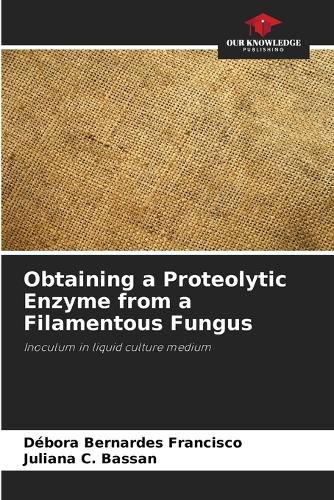Readings Newsletter
Become a Readings Member to make your shopping experience even easier.
Sign in or sign up for free!
You’re not far away from qualifying for FREE standard shipping within Australia
You’ve qualified for FREE standard shipping within Australia
The cart is loading…






Currently, enzymes have become a target of great research interest, as they have high applicability in different industrial sectors, such as medicine, bioenergy and food. The principle used to obtain these molecules in this work was filamentous fungi in a submerged fermentation process, since these organisms have a vast production and secretion of enzymes for their own survival, have a fast generation time, easy genetic manipulation and cultivation and, for this reason, media were studied so that this production could be optimized, providing the ideal conditions of temperature, pH and nutrients for the microorganism. Aspergillus flavus, a filamentous fungus, was obtained from used coffee powder and cultivated in M4 liquid culture medium. It was maintained by periodically replanting it on solid, tilted oatmeal agar. After the fungus had grown, the extract produced was subjected to protein quantification. With the observation of proteins in the sample, tests were carried out to find out which type of enzyme and in which medium its specific activity was greatest. And with the washing test, the enzyme was found to be a metabolite of the fungus.
$9.00 standard shipping within Australia
FREE standard shipping within Australia for orders over $100.00
Express & International shipping calculated at checkout
Currently, enzymes have become a target of great research interest, as they have high applicability in different industrial sectors, such as medicine, bioenergy and food. The principle used to obtain these molecules in this work was filamentous fungi in a submerged fermentation process, since these organisms have a vast production and secretion of enzymes for their own survival, have a fast generation time, easy genetic manipulation and cultivation and, for this reason, media were studied so that this production could be optimized, providing the ideal conditions of temperature, pH and nutrients for the microorganism. Aspergillus flavus, a filamentous fungus, was obtained from used coffee powder and cultivated in M4 liquid culture medium. It was maintained by periodically replanting it on solid, tilted oatmeal agar. After the fungus had grown, the extract produced was subjected to protein quantification. With the observation of proteins in the sample, tests were carried out to find out which type of enzyme and in which medium its specific activity was greatest. And with the washing test, the enzyme was found to be a metabolite of the fungus.